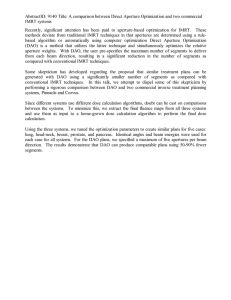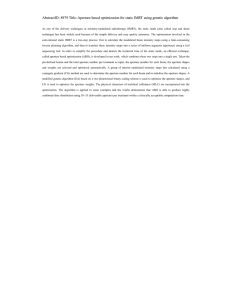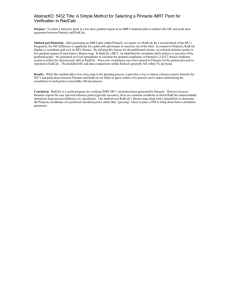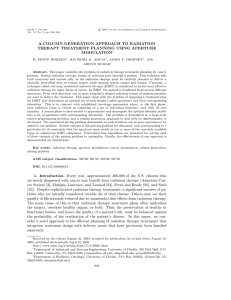Document 14901241
advertisement
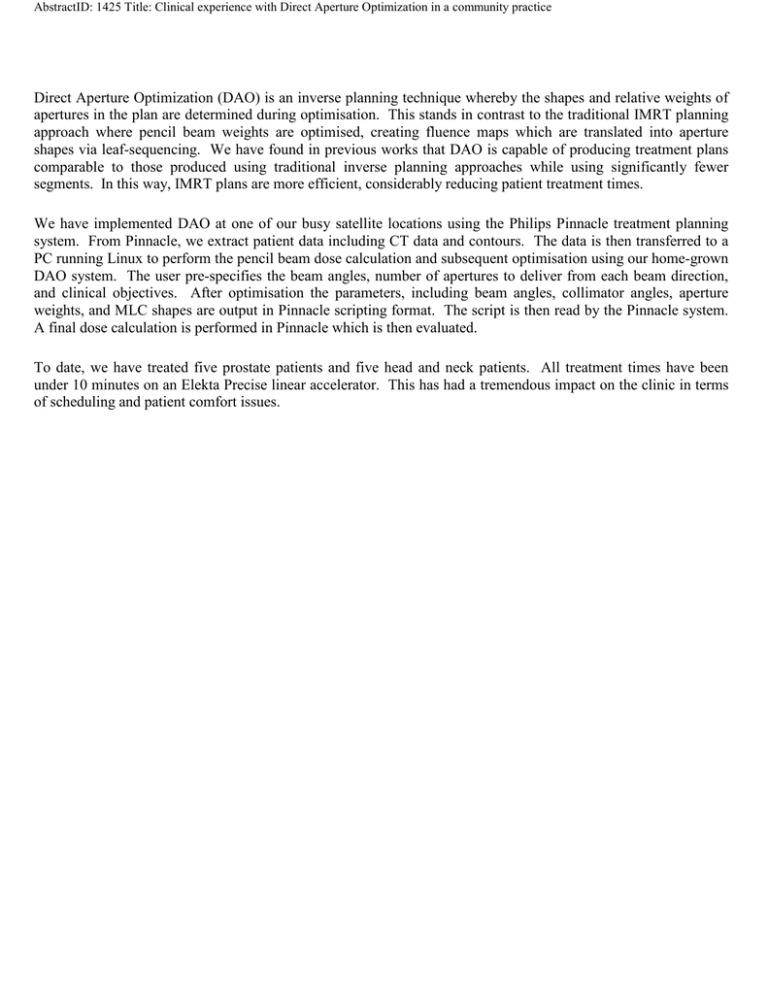
AbstractID: 1425 Title: Clinical experience with Direct Aperture Optimization in a community practice Direct Aperture Optimization (DAO) is an inverse planning technique whereby the shapes and relative weights of apertures in the plan are determined during optimisation. This stands in contrast to the traditional IMRT planning approach where pencil beam weights are optimised, creating fluence maps which are translated into aperture shapes via leaf-sequencing. We have found in previous works that DAO is capable of producing treatment plans comparable to those produced using traditional inverse planning approaches while using significantly fewer segments. In this way, IMRT plans are more efficient, considerably reducing patient treatment times. We have implemented DAO at one of our busy satellite locations using the Philips Pinnacle treatment planning system. From Pinnacle, we extract patient data including CT data and contours. The data is then transferred to a PC running Linux to perform the pencil beam dose calculation and subsequent optimisation using our home-grown DAO system. The user pre-specifies the beam angles, number of apertures to deliver from each beam direction, and clinical objectives. After optimisation the parameters, including beam angles, collimator angles, aperture weights, and MLC shapes are output in Pinnacle scripting format. The script is then read by the Pinnacle system. A final dose calculation is performed in Pinnacle which is then evaluated. To date, we have treated five prostate patients and five head and neck patients. All treatment times have been under 10 minutes on an Elekta Precise linear accelerator. This has had a tremendous impact on the clinic in terms of scheduling and patient comfort issues.
